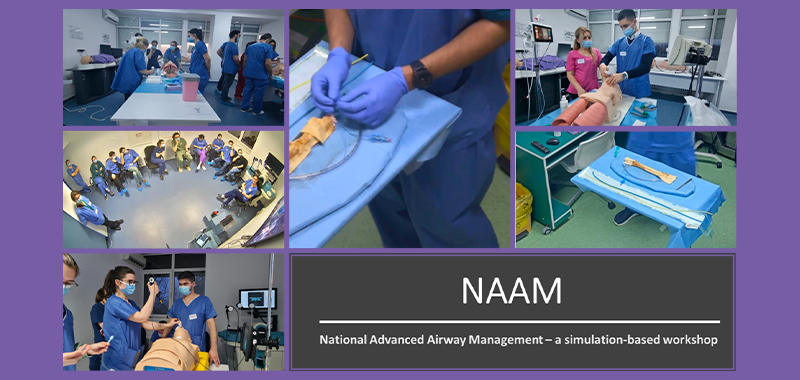
Authors: Cosmin Balan, Mihai Stefan, Cornelia Predoi, Liana Valeanu, Cornel Robu, Bianca Morosanu, Andrei Dumitrache, Robert Thomas Barbulescu, Prof Serban Bubenek, Prof Daniela Filipescu
Romania’s Anaesthesia and Intensive Care Medicine (ICM) education took a significant stride after an innovative simulation-based national workshop in advanced airway management. This pioneering initiative was designed to cater to second-year residents specializing in Anaesthesia and ICM. It was the result of a joint venture between the Romanian Society of Anaesthesia and ICM (SRATI), the European Society of Anaesthesia and ICM (ESAIC), and the Society in Europe for Simulation Applied to Medicine (SESAM).
The workshop was conducted across five Romanian simulation centres, namely, the Centre of Simulation in Anaesthesia and ICM Bucharest (CESIMAB) and four others across the country (i.e., SimLab Timisoara, SimLab Tg. Mures, SimLab Cluj, and SimLab Iasi). This unique nationwide seminar followed a uniform curriculum that ensured a high standard of instruction and learning across all locations.
This workshop was structured around two key modules to ensure in-depth and comprehensive training. Preceded by theoretical lectures, the first module focused on honing practical skills across four stations. These included training in laryngeal mask airway ventilation, double lumen tube insertion with the aid of fiberoptic guidance, techniques of awake intubation like videolaryngoscopy and fiberoptic intubation, and percutaneous tracheostomy. Fiberoptic skills were inculcated using advanced high-fidelity simulators, whereas the larynx model used for emergency tracheostomy comprised a pig larynx covered in cured pelt. This broad range of skills provided the participants with a comprehensive toolkit for their future clinical practice and ensured they were well-prepared to handle various critical situations. The second module of the workshop focused on simulated clinical case scenarios, serving as a crucible for participants to put theory and skills into practice. Trainees were presented with diverse, high-stakes situations, ranging from routine airway management to critical emergencies, to test their clinical acumen, decision-making capabilities, technical proficiency, and ability to sustain effective teamwork in crisis.
The workshop was universally well received across all five centres. For instance, CESIMAB reported highly positive feedback, a testament to the effectiveness of this innovative approach to clinical training.
The significance of this simulation workshop in Anaesthesia and ICM cannot be understated. With the rising complexity of clinical cases and the ever-evolving technologies, hands-on training in a controlled and risk-free environment is instrumental in building competency, enhancing confidence, and promoting patient safety.
Furthermore, the joint initiative by SRATI, ESAIC, and SESAM illustrates the importance of collaboration in raising the quality of medical education. By leveraging the expertise and resources of these organizations, the workshop provided an enriching and standardized learning experience across Romania.
In conclusion, the Romanian National Simulation Workshop in Advanced Airway Management represents a landmark training experience in Romania. The hands-on experience in advanced techniques, the uniform curriculum, and multi-centre participation have set a robust model for future initiatives. It underscores the importance of practical training and collaboration in medical education, ultimately contributing to better patient care and outcomes. This successful venture holds promise for further programs in Anaesthesia and ICM (e.g., trauma, shock, point-of-care ultrasound, paediatric emergencies, obstetric emergencies, and toxicological emergencies) and may serve as an example for other countries to follow.



